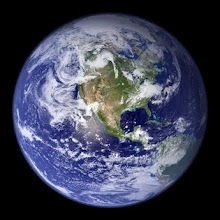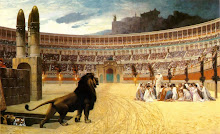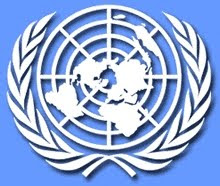 Where is the dividing line between acceptable and unacceptable criticism of religion? How should the media cover issues that offend certain believers? These issues came up at last week’s Catholic-Muslim Forum in Rome and in the public editor’s column in the Sunday New York Times. In both cases, useful distinctions were made. But I’m not sure how much agreement they will produce the next time someone finds a depiction of a religion, its beliefs or its symbols outrageous.The Catholic-Muslim Forum, an unprecedented meeting between Vatican and Muslim leaders and scholars, approached the issue as one of the rights of a minority religion, since cases they are concerned about-such as the Danish caricatures of the Prophet Mohammad-involved criticism of a minority faith by the local majority. They agreed that “religious minorities are entitled to be respected in their own religious convictions and practices … and their founding figures and symbols they consider sacred should not be subject to any form of mockery or ridicule.”When I asked Cardinal Jean-Louis Tauran, head of the Catholic delegation, whether this meant the Vatican would support moves to limit criticism of religion that some western critics see as censorship, he said: “One must distinguish between a critical spirit, a spirit of criticism, and mockery. Freedom of speech means that we have the right to express opinions about religion, philosophy, philosophers and theologians and founders of religion. That is one thing. But deriding them and mocking them is something else… That impacts the values on which millions of people base their lives. That’s why we talk about mockery. I introduced that term… Mockery is very strong.”New York Times Public Editor Clark Hoyt took up the issue on Sunday in dissecting his paper’s review of a play portraying Jesus as a sexually active gay man. Bill Donohue, the president of the Catholic League for Religious and Civil Rights, called it a vile play and said the Times liked it “not for artistic purposes but for its assault on Catholicism.” He urged his members to write to the public editor, and more than 150 did. While Hoyt found some of the protests over the top, he noted that the review was one-sided. It called the play “an earnest and reverent spin on the Jesus story, with some soft-spoken, gay-friendly politics thrown in” but never told readers why Christians might be offended. If the review had mentioned the fact that gay sex and same-sex marriage are against the teachings of the Church, the Times would have done its duty in presenting the pros and cons of this issue, he said.We’re going to hear more about this issue in the months to come because Muslim countries are campaigning to have the United Nations approve a ban on published material that defames or promotes disrespect for religion. This will be a central issue at the April 2009 conference in Geneva following up on the 2001 Durban World Conference on Racism. Opposition to this has been gathering steam (see here and here and here).Do you think the United Nations or any government can determine where the line between criticism and blasphemy lies?
Where is the dividing line between acceptable and unacceptable criticism of religion? How should the media cover issues that offend certain believers? These issues came up at last week’s Catholic-Muslim Forum in Rome and in the public editor’s column in the Sunday New York Times. In both cases, useful distinctions were made. But I’m not sure how much agreement they will produce the next time someone finds a depiction of a religion, its beliefs or its symbols outrageous.The Catholic-Muslim Forum, an unprecedented meeting between Vatican and Muslim leaders and scholars, approached the issue as one of the rights of a minority religion, since cases they are concerned about-such as the Danish caricatures of the Prophet Mohammad-involved criticism of a minority faith by the local majority. They agreed that “religious minorities are entitled to be respected in their own religious convictions and practices … and their founding figures and symbols they consider sacred should not be subject to any form of mockery or ridicule.”When I asked Cardinal Jean-Louis Tauran, head of the Catholic delegation, whether this meant the Vatican would support moves to limit criticism of religion that some western critics see as censorship, he said: “One must distinguish between a critical spirit, a spirit of criticism, and mockery. Freedom of speech means that we have the right to express opinions about religion, philosophy, philosophers and theologians and founders of religion. That is one thing. But deriding them and mocking them is something else… That impacts the values on which millions of people base their lives. That’s why we talk about mockery. I introduced that term… Mockery is very strong.”New York Times Public Editor Clark Hoyt took up the issue on Sunday in dissecting his paper’s review of a play portraying Jesus as a sexually active gay man. Bill Donohue, the president of the Catholic League for Religious and Civil Rights, called it a vile play and said the Times liked it “not for artistic purposes but for its assault on Catholicism.” He urged his members to write to the public editor, and more than 150 did. While Hoyt found some of the protests over the top, he noted that the review was one-sided. It called the play “an earnest and reverent spin on the Jesus story, with some soft-spoken, gay-friendly politics thrown in” but never told readers why Christians might be offended. If the review had mentioned the fact that gay sex and same-sex marriage are against the teachings of the Church, the Times would have done its duty in presenting the pros and cons of this issue, he said.We’re going to hear more about this issue in the months to come because Muslim countries are campaigning to have the United Nations approve a ban on published material that defames or promotes disrespect for religion. This will be a central issue at the April 2009 conference in Geneva following up on the 2001 Durban World Conference on Racism. Opposition to this has been gathering steam (see here and here and here).Do you think the United Nations or any government can determine where the line between criticism and blasphemy lies?Posted by: Tom Heneghan
http://blogs.reuters.com/faithworld/2008/11/10/where-is-the-line-between-criticism-and-blasphemy/?p=2193?tempedition=debatehub
As in the days of Noah...


























.bmp)
No comments:
Post a Comment